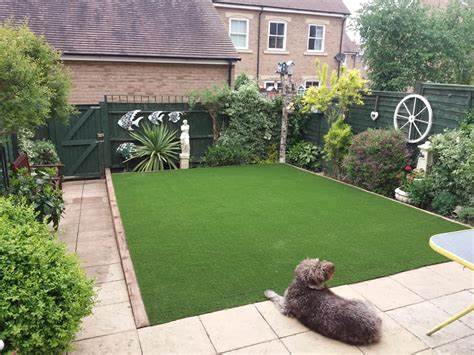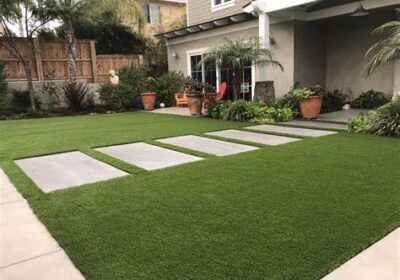5 Essential Artificial Grass Maintenance Tips for a Beautiful Lawn In San Diego

5 Essential Artificial Grass Maintenance Tips for a Beautiful Lawn In San Diego
Wondering how to keep your aging artificial grass looking fresh and vibrant? Maintaining an old artificial lawn doesn’t have to be a hassle. With these five expert tips, you can rejuvenate your turf and enjoy a lush green yard year-round. From proper cleaning techniques to simple repairs, we’ve got you covered. Say goodbye to worn-out patches and hello to a beautiful artificial lawn that stands the test of time.
Understanding Artificial Grass Maintenance
Importance of Regular Care
Regular care for your old artificial grass lawn is crucial to preserve its appearance and longevity. Frequent brushing helps prevent matting, while removing debris promptly prevents staining and damage. Proper maintenance also ensures that the infill remains evenly distributed, preventing uneven wear.
To maintain the vibrancy of your old artificial grass lawn, regular cleaning is essential. Removing leaves, twigs, and other debris prevents mold growth and maintains proper drainage. rinsing the turf occasionally helps eliminate dust and pollen buildup.
Investing time in grooming your old artificial grass lawn can significantly extend its lifespan. By regularly brushing the fibers against the grain, you can prevent matting and keep the turf looking lush and natural. Periodic infill top-ups help maintain proper cushioning and support underfoot.
Challenges with Older Lawns
Older artificial grass lawns may face challenges such as fading color due to prolonged exposure to sunlight. To combat this issue, consider applying a UV protectant coating annually. Another common challenge is compacted infill, which can be resolved by loosening it with a rake or brush.
Over time, older artificial grass lawns may develop wrinkles or folds due to settling or shifting of the base material beneath them. To address this, gently stretch out the affected areas and secure them in place using landscaping pins. Regularly inspecting for these issues can help you catch them early on before they worsen.
Cleaning Techniques
Remove Debris
To maintain your old artificial grass lawn, start by regularly removing leaves, twigs, and other debris. Use a leaf blower or a stiff brush to keep the surface clean. This prevents clogging of the drainage system and maintains the grass’s appearance.
Gentle Washing
Occasionally, give your artificial grass a gentle wash with water to remove dust and dirt. Use a garden hose with a spray nozzle set on low pressure. Avoid using harsh chemicals as they can damage the grass fibers over time. Frequent light washing helps keep the grass looking fresh and vibrant.
Spot Treatment
For tougher stains or spills on your artificial grass, opt for spot treatment. Blot the area with a mixture of mild soap and warm water using a soft cloth or sponge. Rinse thoroughly with clean water afterward. Promptly addressing stains can prevent them from setting in and causing long-term damage.
Keeping the Grass Upright
Brush Regularly
To maintain your old artificial grass lawn, brushing regularly is essential. This helps prevent matting and keeps the fibers upright. Use a stiff-bristled brush to gently comb through the grass in different directions.
Regular brushing also helps distribute infill material evenly across the lawn, ensuring proper coverage for durability. Aim to brush your artificial grass at least once a month to keep it looking fresh and vibrant.
Use Proper Tools
When it comes to upkeeping your artificial grass, using the right tools is crucial. Opt for a brush with soft bristles, as stiff brushes can damage the fibers over time. Consider investing in a leaf blower to remove debris efficiently.
Proper tools not only make maintenance easier but also extend the lifespan of your artificial grass lawn. Avoid using sharp tools that can tear or puncture the turf, leading to costly repairs.
Managing Weeds and Moss
Preventive Measures
To prevent weeds and moss from invading your artificial grass, regularly brush the surface to remove debris. Apply a weed killer specifically designed for artificial lawns to keep unwanted plants at bay.
Consider installing a geotextile membrane beneath the turf during installation. This barrier inhibits weed growth while allowing water drainage, maintaining the longevity of your lawn.
Regularly inspect your lawn for any signs of moss growth. If detected, promptly treat the affected areas with an appropriate moss killer. Ensure proper ventilation and sunlight exposure to prevent moss buildup.
Safe Removal
When removing weeds or moss from your artificial grass, opt for environmentally friendly products to minimize harm to the ecosystem. Avoid using harsh chemicals that can damage the turf or surrounding vegetation.
Gently pull out any visible weeds by hand, ensuring to remove the roots completely to prevent regrowth. For stubborn weeds, use a specialized tool like a weeding knife for effective removal without damaging the grass fibers.
Addressing Drainage Issues
Inspect Regularly
Regular inspection of your old artificial grass lawn is crucial to identify any drainage issues promptly. Inspect the lawn at least once a month to check for any signs of poor drainage, such as standing water or soggy areas. Look out for debris blocking the drainage system, which can exacerbate the problem.
Keep an eye out for discoloration, foul odors, or mold growth on the grass, as these are indicators of poor drainage. If you notice any of these signs during your inspection, take immediate action to address the underlying drainage issues. Proactive inspection and maintenance can prevent costly repairs in the long run.
Enhance Drainage
To enhance drainage on your old artificial grass lawn, consider installing a sub-surface drainage system. This system helps to redirect excess water away from the surface, preventing waterlogging and ensuring proper drainage. Another effective way to improve drainage is by adding a layer of granular infill material to promote better water flow through the turf.
Regularly aerating your artificial grass lawn can also help improve drainage by loosening compacted soil and allowing water to penetrate deeper into the ground. By enhancing the drainage system of your old artificial grass lawn, you can prolong its lifespan and maintain its aesthetic appeal.
FAQs
How Often Should I Clean My Artificial Grass Lawn?
Artificial grass should be cleaned regularly, at least once a week, to maintain its appearance and longevity. Remove debris, leaves, and pet waste promptly to prevent odors and keep the grass looking fresh.
How Can I Prevent Weeds And Moss From Growing On My Artificial Grass Lawn?
To prevent weeds and moss, ensure proper installation with a weed membrane underneath the artificial grass. Regularly brush the grass to keep it upright, preventing moss growth. Use eco-friendly weed killers sparingly if needed.
What Are Some Effective Techniques For Cleaning Artificial Grass?
Use a stiff brush or leaf blower to remove debris and dirt from the surface. For tougher stains, mix mild soap with warm water and gently scrub the area. Rinse thoroughly with water to maintain cleanliness.
Is It Essential To Address Drainage Issues In Maintaining An Artificial Grass Lawn?
Yes, addressing drainage issues is crucial to prevent waterlogging and maintain the turf’s condition. Ensure proper installation of drainage systems during initial setup. Regularly check for blockages or issues that may hinder proper drainage flow.
How Can I Keep My Artificial Grass Looking Lush And Upright?
Regularly brush your artificial grass using a stiff brush or broom to keep the fibers upright. This helps maintain its natural appearance and prevents matting. Brushing also helps redistribute infill material evenly across the lawn.
Conclusion
Maintaining your old artificial grass lawn doesn’t have to be a daunting task. By understanding the basics of artificial grass maintenance, employing effective cleaning techniques, keeping the grass upright, managing weeds and moss, and addressing drainage issues promptly, you can ensure that your lawn remains vibrant and long-lasting. Remember, regular upkeep is key to preserving the beauty and functionality of your artificial grass.
Take charge of your artificial grass lawn today by implementing the tips discussed. By staying proactive in your maintenance efforts, you can enjoy a lush and pristine outdoor space for years to come. Don’t wait until issues arise – start applying these strategies now to keep your artificial grass looking its best!
For more information, contact our professional from Green Turf Pro at (619) 558-7815.



Leave a Reply